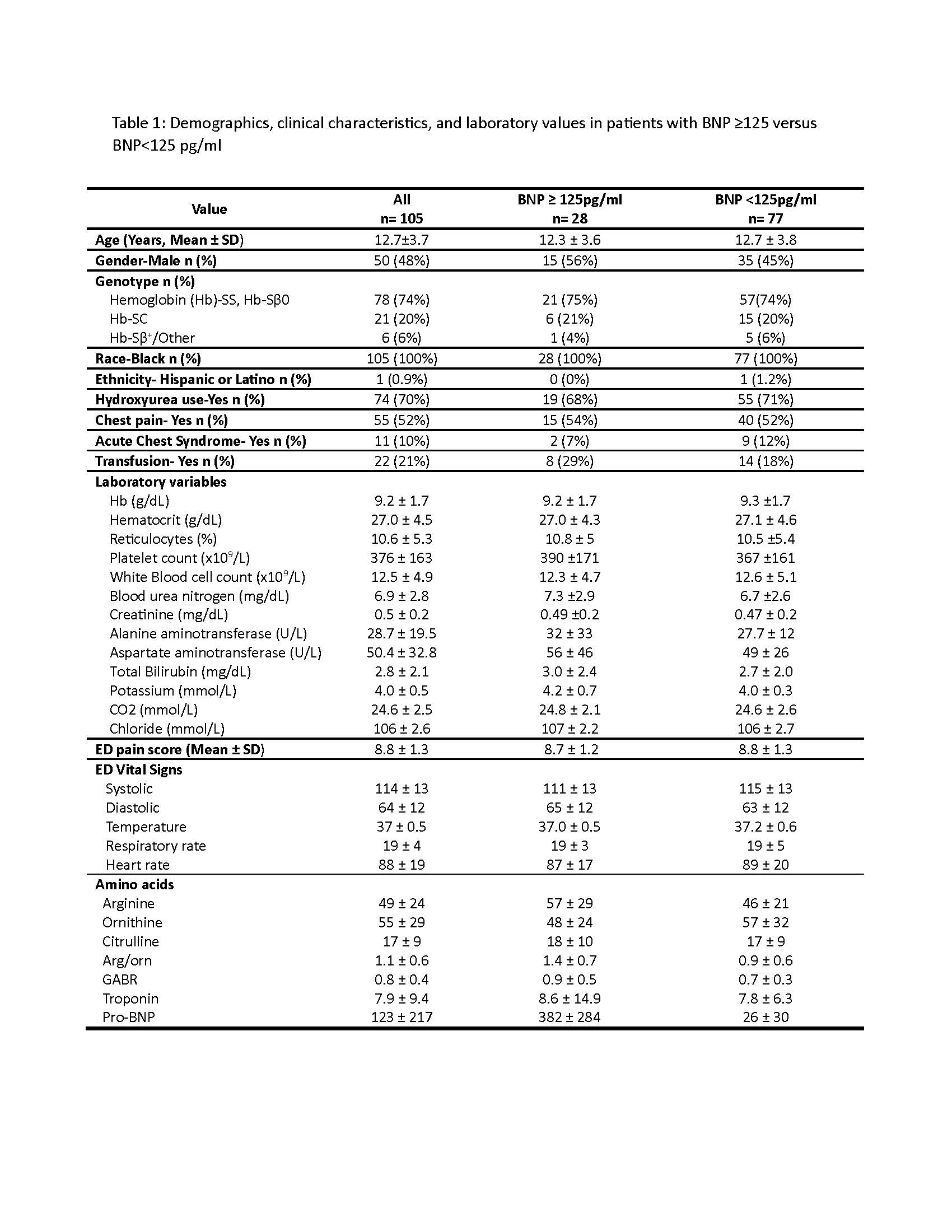Hematology/Oncology 2: Pediatric Hematology
Session: Hematology/Oncology 2: Pediatric Hematology
113 - N-Terminal Prohormone of Brain Natriuretic Peptide (NT-proBNP) is High in Children with Sickle Cell Disease (SCD) Hospitalized for Vaso-occlusive Pain Episodes (VOE)
Saturday, April 26, 2025
2:30pm - 4:45pm HST
Publication Number: 113.5756
Dunia Hatabah, Emory University School of Medicine, Atlanta, GA, United States; Rawan Korman, Emory University School of Medicine, Atlanta, GA, United States; LOU ANN S. BROWN, Emory University, Atlanta, GA, United States; Frank Harris, Emory University, Atlanta, GA, United States; Giorgi Maziashvili, Emory University School of Medicine, Atlanta, GA, United States; Chris A. Rees, Emory University School of Medicine, Atlanta, GA, United States; Carlton Dampier, Emory University School of Medicine, Atlanta, GA, United States; Claudia R.. Morris, Emory University School of Medicine, Atlanta, GA, United States
- DH
Dunia Hatabah, MD (she/her/hers)
Postdoctoral Fellow
Emory University School of Medicine
Atlanta, Georgia, United States
Presenting Author(s)
Background: Cardiovascular risk in children with SCD is underexplored. Onalo and colleagues found elevated tricuspid regurgitant velocity (TRV), a non-invasive surrogate for pulmonary hypertension in over 60% of children presenting with SCD-VOE in Nigeria, along with abnormal NT-proBNP levels signaling cardiac stress and reported improvement in markers with oral arginine (Arg) supplementation vs placebo, highlighting a potential therapeutic benefit. Arg is the obligate substrate for nitric oxide (NO) production, which plays a pivotal role in vascular function. Evaluating cardiac dysfunction and the response to Arg in children with SCD is key for early detection and management of cardiac complications.
Objective: To assess NT-proBNP levels in hospitalized children with SCD-VOE and associations with the Arg-NO pathway.
Design/Methods: This is a secondary analysis of samples collected as part of clinical trials evaluating the impact of Arg therapy in hospitalized children aged 3-21 years with SCD-VOE. NT-proBNP levels were analyzed using ELISA at ED presentation and hospital discharge. NT-proBNP ≥125pg/ml was considered elevated based on prior studies. Plasma global Arg bioavailability ratio (GABR;arg/[ornithine+citrulline]) was determined via mass spectrometry.
Results: 105 children (12.7±3.7years, 48% male, 74% hemoglobin SS/Sβ0,70% on Hydroxyurea) were included. NT-proBNP at ED was 123±217pg/ml vs 116±211pg/ml at discharge (p=0.69), 27% had NT-proBNP ≥125pg/ml and 23% ≥160pg/ml; 20% remained ≥125pg/ml and 19% remained ≥160pg/ml at discharge. No significant differences in patient demographics, blood pressure, laboratory assessments or clinical characteristics including chest pain and acute chest syndrome (ACS) in patients with elevated NT-proBNP vs < 125pg/ml at presentation. No statistically significant differences between presentation and discharge NT-proBNP levels in Arg vs placebo arm. NT-proBNP correlated positively with GABR in ED (r=0.22, p=0.02) and negatively with systolic blood pressure (r=-0.22;p=0.03). In patients with NT-proBNP ≥160pg/ml (n=24) at presentation, NT-proBNP correlated with retic count (r=0.45;p=0.03) and NO metabolites (r=0.49;p=0.02).
Conclusion(s): In this SCD-VOE cohort, more than 1 in 4 children had elevated NT-proBNP indicating notable cardiac stress unrelated to chest pain or ACS. The positive association between NT-proBNP and plasma GABR may reflect an increase in Arg synthesis as a compensatory mechanism to increase production of NO. This observation highlights unresolved cardiac stress post-VOE discharge currently unaddressed, warranting further investigation.


